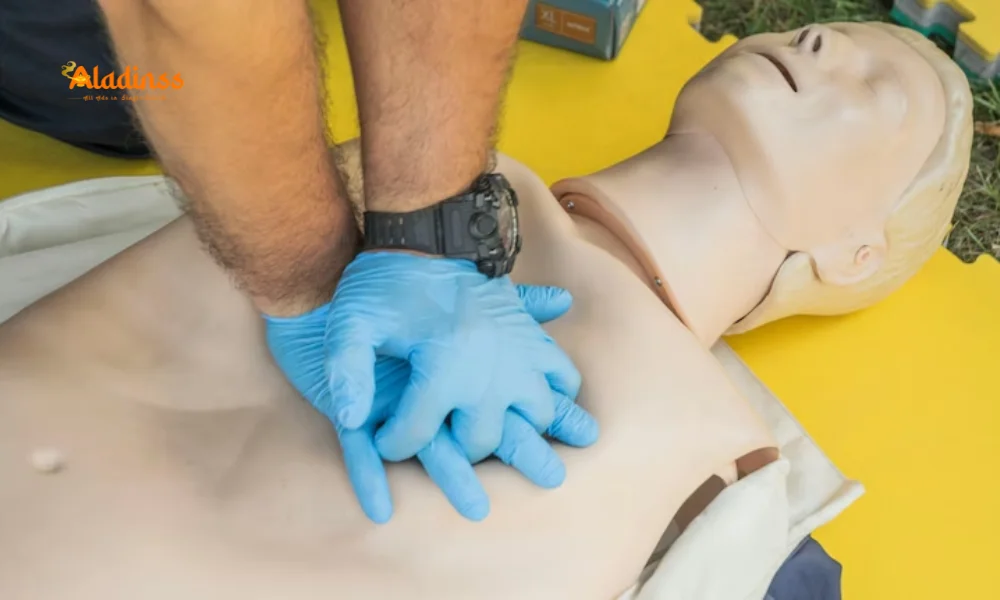Stage 0 Breast Cancer: How Early Detection Can Save Your Life

Stage 0 Breast Cancer: Why Early Detection Saves Lives!
Stage 0 breast cancer, also known as carcinoma in situ, is the earliest form of breast cancer, where abnormal cells are confined to the breast ducts or lobules without invading surrounding tissue. Representing about 20% of new breast cancer diagnoses, this non-invasive stage is highly treatable, with a 99% five-year survival rate when detected early. Often symptomless, Stage 0 breast cancer underscores the critical role of routine screenings, especially for women over 40 or those at high risk. Understanding this stage empowers individuals to act early and improve outcomes significantly.
In India, breast cancer is the most common cancer among women, with approximately 192,020 new cases and 98,337 deaths reported in 2022, according to the Global Cancer Observatory (GLOBOCAN). The lifetime risk is 1 in 28 women, rising to 1 in 22 in urban areas. Early detection through mammography and awareness can transform the prognosis for Stage 0 breast cancer, offering hope and effective treatment options that avoid the need for aggressive interventions.
Understanding Stage 0 Breast Cancer
Stage 0 breast cancer is characterized by abnormal cells that have not spread beyond their point of origin, making it non-invasive and highly curable. Unlike Stages 1 to 4, which describe tumors that grow and potentially metastasize, Stage 0 is confined to the breast’s ducts, lobules, or nipple area. Its early detection, often through routine mammograms, allows for timely intervention, significantly reducing the need for aggressive treatments like chemotherapy.
This stage is often asymptomatic, meaning it may go unnoticed without regular screenings. In rare cases, symptoms like a lump or bloody nipple discharge may appear, but these are not consistent indicators. Dr. Kunjal Lila, a leading surgical pathologist, emphasizes that awareness and proactive screening are vital for catching Stage 0 breast cancer before it progresses to more advanced, harder-to-treat stages.

Types of Stage 0 Breast Cancer
Stage 0 breast cancer encompasses three main types, each confined to specific areas of the breast:
- Ductal Carcinoma in Situ (DCIS): The most common type, where abnormal cells are found in the breast ducts. DCIS accounts for the majority of Stage 0 cases and is highly treatable.
- Lobular Carcinoma in Situ (LCIS): Occurs in the milk-producing lobules of the breast. LCIS is less common and often considered a risk factor for future breast cancer.
- Paget’s Disease of the Nipple: A rare form affecting the nipple and areola, often presenting with skin changes like redness or scaling.
All three types are non-malignant at this stage, meaning they have not spread to surrounding tissues or other parts of the body. Their early detection offers an excellent opportunity for effective treatment and long-term survival.
The Growing Burden of Breast Cancer in India
Breast cancer is a significant public health concern in India, with rising incidence rates, particularly in urban areas. The 2022 GLOBOCAN data highlights the scale of the issue, with nearly 192,020 new cases and over 98,000 deaths annually. Urban women face a higher risk, with a 1 in 22 chance of developing breast cancer in their lifetime, compared to 1 in 28 overall. This disparity underscores the need for targeted awareness campaigns and accessible screening programs, especially in cities where lifestyle factors may contribute to higher risks.
The high prevalence of breast cancer in India emphasizes the importance of early detection, particularly for Stage 0 cases, which offer the best prognosis. Public health initiatives and education can empower women to seek regular screenings, reducing mortality rates and improving quality of life for those diagnosed.
The Critical Role of Screening
Since Stage 0 breast cancer typically presents no symptoms, routine screening mammography is the primary method for detection. Mammograms can identify abnormalities like microcalcifications or small lesions that may indicate DCIS or LCIS. For women over 40, annual or biennial mammograms are recommended as part of routine health checkups. High-risk women, including those with a family history of breast cancer, genetic mutations (e.g., BRCA1 or BRCA2), or prior chest radiation, should begin screenings as early as age 30.
If a mammogram detects an abnormality, a biopsy is performed to analyze the cells and determine the cancer’s grade—low, intermediate, or high. This information guides treatment decisions, ensuring a tailored approach that maximizes effectiveness while minimizing invasiveness. Early detection through screening not only improves outcomes but also reduces the emotional and physical burden of treatment.
Treatment Options for Stage 0 Breast Cancer
Treatment for Stage 0 breast cancer is highly individualized, depending on factors like the type and grade of the lesion, the patient’s age, and overall health. Options range from minimally invasive to surgical interventions, with the goal of preventing progression to invasive cancer. Common treatment approaches include:
- Active Surveillance: For low-risk DCIS, a “wait-and-watch” approach may be recommended, involving regular monitoring without immediate intervention.
- Lumpectomy: Surgical removal of the abnormal tissue with a margin of healthy tissue, often followed by radiation to reduce recurrence risk.
- Mastectomy: In cases of extensive DCIS or patient preference, removal of the entire breast may be considered.
- Hormonal Therapy: Medications like tamoxifen may be prescribed to lower the risk of recurrence, particularly for hormone-receptor-positive cases.
Chemotherapy is rarely needed for Stage 0 breast cancer, as the disease is non-invasive. This makes treatment less taxing on the body compared to later stages, allowing patients to maintain a high quality of life during and after treatment.
Prognosis and Survival Rates
The prognosis for Stage 0 breast cancer is exceptionally positive, with a five-year survival rate of 99% when the cancer remains confined to the breast. This high survival rate reflects the non-invasive nature of the disease and the effectiveness of early intervention. Patients diagnosed at this stage often require less aggressive treatments, avoiding the physical and emotional toll of advanced cancer therapies.
The key to this favorable outcome is early detection, which allows for timely treatment before the cancer progresses. Regular screenings, combined with awareness of personal risk factors, enable women to take control of their health and achieve excellent long-term outcomes.
Risk Factors and Prevention
While the exact cause of Stage 0 breast cancer is not fully understood, several risk factors increase the likelihood of developing it. These include:
- Family History: A history of breast cancer in close relatives increases risk, especially if genetic mutations like BRCA1 or BRCA2 are present.
- Age: Risk rises with age, particularly after 40, making regular screenings essential.
- Hormonal Factors: Prolonged exposure to estrogen, such as through early menstruation, late menopause, or hormone replacement therapy, can elevate risk.
- Lifestyle Factors: Obesity, alcohol consumption, and lack of physical activity may contribute to higher risk.
Preventive measures include maintaining a healthy lifestyle, limiting alcohol intake, exercising regularly, and adhering to screening guidelines. High-risk individuals may benefit from genetic counseling or preventive medications to reduce their risk of developing breast cancer.
The Importance of Awareness and Education
Raising awareness about breast cancer screening is crucial, especially in India, where cultural stigmas and limited access to healthcare can delay diagnosis. Educational campaigns can inform women about the importance of mammograms and self-examinations, encouraging early detection of Stage 0 breast cancer. Community programs and healthcare initiatives should focus on making screenings accessible and affordable, particularly in rural areas.
Healthcare providers play a vital role in guiding patients through the screening and treatment process. Open discussions about family history, risk factors, and screening options empower women to make informed decisions about their health. By prioritizing awareness, society can reduce the burden of breast cancer and improve outcomes for countless individuals.
Emotional and Psychological Support
A diagnosis of Stage 0 breast cancer, while highly treatable, can still evoke fear and anxiety due to the word “cancer.” Providing emotional and psychological support is essential for patients navigating this diagnosis. Support groups, counseling, and open communication with healthcare providers can help alleviate fears and build confidence in the treatment process.
Families and friends also play a crucial role in supporting patients, offering encouragement and understanding. By fostering a supportive environment, patients can approach treatment with optimism, knowing that Stage 0 breast cancer offers an excellent chance for a full recovery.
Advancements in Detection and Treatment
Advancements in medical technology have improved the detection and management of Stage 0 breast cancer. Digital mammography, 3D tomosynthesis, and MRI scans offer greater accuracy in identifying early-stage lesions. Additionally, molecular testing can assess the risk of recurrence, guiding personalized treatment plans. These innovations enhance the ability to catch and treat Stage 0 breast cancer before it progresses, further improving outcomes.
Research continues to explore less invasive treatment options, such as targeted therapies and improved hormonal treatments, reducing the need for surgical interventions in some cases. These advancements underscore the importance of staying updated on medical developments and consulting with specialists to explore all available options.
Conclusion: Empowerment Through Early Action
Stage 0 breast cancer represents a unique opportunity to intervene early, prevent progression, and achieve near-perfect survival rates. With a 99% five-year survival rate and minimally invasive treatment options, early detection through routine screenings is a game-changer. Women in India, where breast cancer is a leading health concern, can take control of their health by prioritizing mammograms, understanding risk factors, and seeking timely medical advice. By embracing awareness and action, we can transform the fight against breast cancer and ensure brighter, healthier futures.
Comment / Reply From
No comments yet. Be the first to comment!







